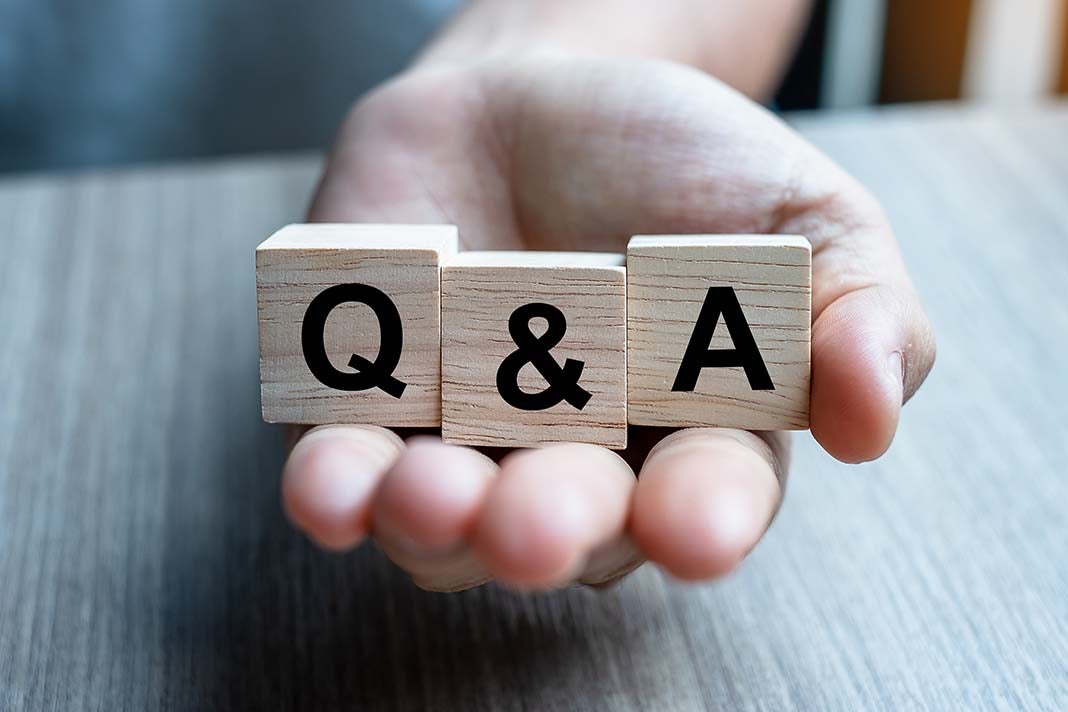
Regardless of your role or circumstance, asking great questions is a fundamental way to up your communication skills. A great question has the power to shift the dynamic of a conversation, help you gain clarity on a situation, or bring out the best in others. Here are 7 tips that you can use to start asking better questions.
1. Keep Your Goal in Mind
Depending on who you are dealing with, you could have a very different goal for your communication. With a client, your goal could be to build rapport and help them effectively hit their KPI’s. With a member of your team, your goal might be to coach them to solve problems independently.
Keeping your goal in mind will allow you to be very intentional with your questions and to keep them focused on a purpose. This “why” will serve as your guiding light, especially in tough scenarios.
2. Don’t Aim for “Yes”
It is important to avoid asking questions that result in the other party simply saying “yes.” A “yes” answer doesn’t provide you with any additional information, and often just confirms your preconceived biases. Additionally, “yes” doesn’t always mean “yes.” “Yes” can also mean, “yes, but I’m just saying this to get you off my back,” “yes, but the answer is actually no,” or “yes, but I don’t intend to follow through on my commitment.”
Instead, if you are asking a yes/no question, “no,” is actually a more powerful and useful answer. “No,” reduces the potential for other options and allows you to follow up with clarifying questions. We tend to fear “no,” but “no,” empowers our counterpart and makes them more comfortable to speak openly.
3. Ask Open-Ended Questions
Beyond yes/no lies the power of the open-ended question. By definition, open-ended questions leave the floor open for the respondent to elaborate. These are usually the most powerful questions because the answers can often surprise you. Instead of a yes/no, where there are only two potential responses (both of which you have already considered), an open-ended question has infinite possibilities. They’ll often result in your respondent solving the problem for you (or for themselves). Some great open-ended questions include:
- How do you expect me to do that? (In response to a demand)
- What have we decided on today? (Recap a meeting, hear another’s point of view)
- What could I have done to improve this deliverable? (Solicit feedback)
- Have you ever seen a situation where the opposite was true? (When dealing with someone who thinks they’re 100% right)
4. Apply Mirroring
Mirroring is the simple concept of repeating someone’s words back to them, but phrasing them as a question. For example, if a client told you that they “were unhappy with the most recent report,” you would simply repeat “unhappy with the report?” This accomplishes three very important things: it makes your counterpart feel heard (you are explicitly repeating what they said), it buys you some time if you are caught off guard, and it asks a very open-ended question that allows them to elaborate on their point.
It feels unnatural to mirror at first, but it works almost every time. Just be cognizant of the amount of mirroring that you are doing relative to other communication (don’t be a parrot), and be genuine in your curiosity.
5. Label Their Emotions
Labeling your counterparts’ emotions is an extremely effective way to quickly build trust and set up great questions. A label starts with an observation, i.e.: “it seems like,” or “it feels like,” then the label itself, i.e.: “our report didn’t live up to your standards.” It is crucially important to start with an observation, because a direct statement, i.e.: “our report didn’t live up to your standards,” can feel much more like an accusation and put your counterpart on the defensive. Sometimes your label will be incorrect, but by framing it as an observation it will allow your counterpart to elaborate either way.
Labels are a fantastic way to set up for an open-ended question. For example, “it seems like our report didn’t live up to your standards (label)… what could we do better next time? (open-ended question).” By using the label, you’re defusing the emotion related to the response by showing that you are tuned into their feelings and allowing for an effective response.
6. Don’t Fear the Pause
With regards to asking better questions, silence really is golden. Imagine you’ve applied a beautiful label with an open-ended question, and the other line is silent. Instead of waiting for a response, you follow up with, “is that accurate?” a yes/no question, effectively bringing you back to square one. Sometimes asking good questions can be uncomfortable, but the best thing that you can do is to just be quiet and wait for a response. If the question is truly thought-provoking, your counterpart is going to need some time to think of an answer. Give them the time, and let the silence work its magic.
7. Perfect Your Tone
So far we’ve been focused on the words to say, but words are actually only a small fraction of how humans communicate. In fact, Albert Mehrabian coined the “7-38-55 Rule”, which states that words account for merely 7% of our personal communication, while tone and body language account for 38% and 55%, respectively. Because of this, it is imperative that you consider not just what you say, but how you say it. The best thing to do is to always keep your goal in mind, and be genuine whether it be with peers or clients. Smile (even on the phone) if you are working to establish rapport or delivering good news. Use a more serious, downwardly inflected tone when necessary to get your point across.
Do you have any tips or great questions that you love? Let us know!












